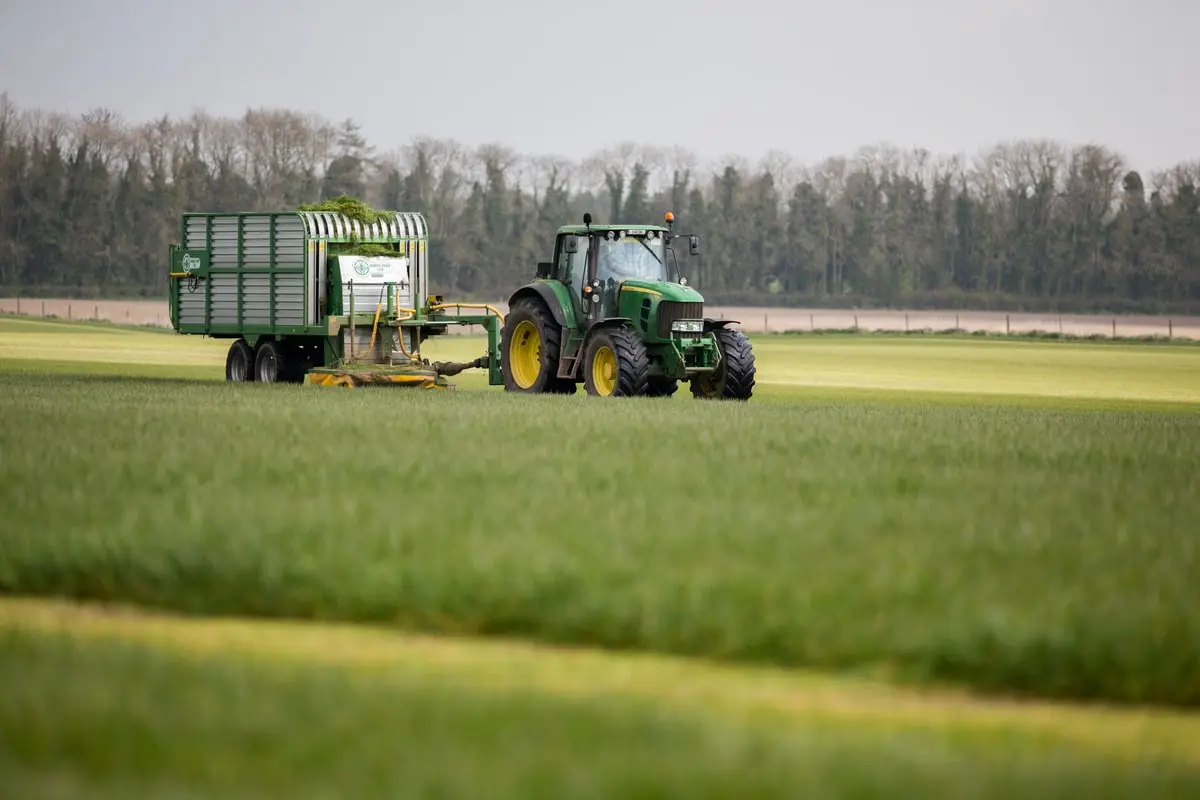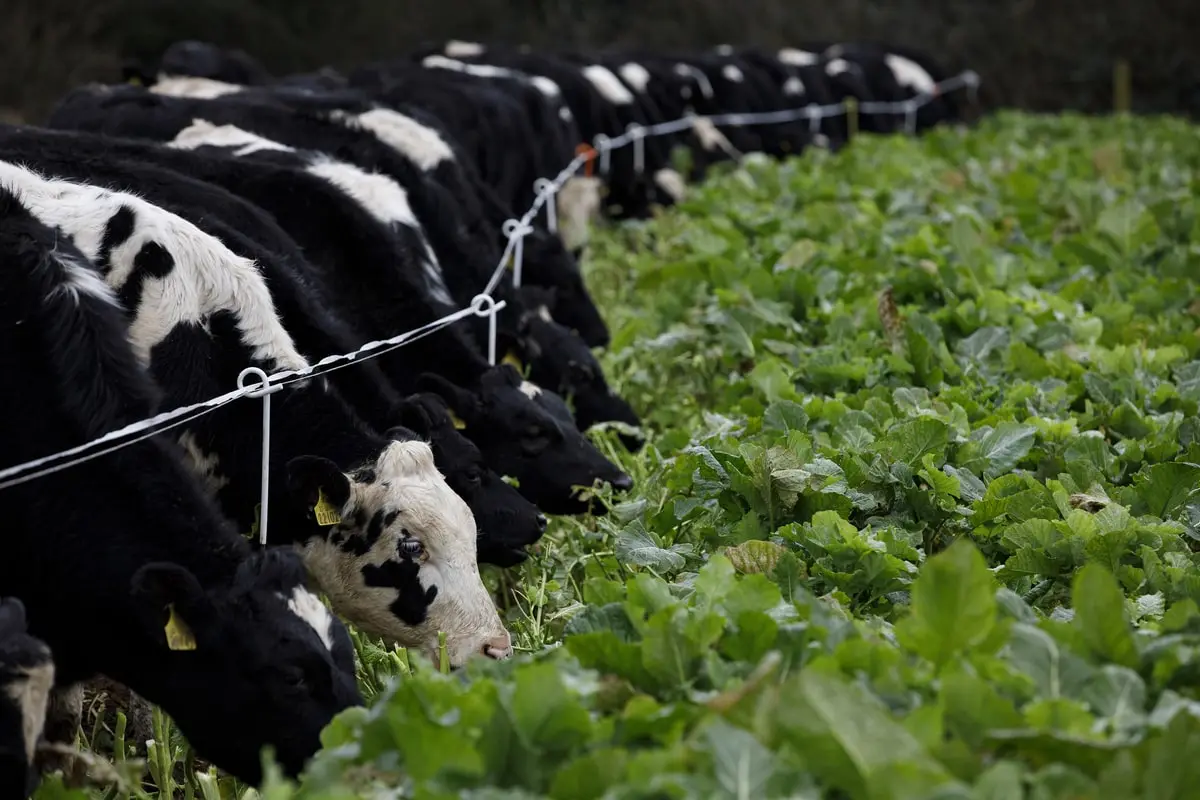To manage grassland productively and achieve higher output through increased grass utilisation, planning and management through the most appropriate grazing systems for your business is essential.
Germinal grassland expert William Fleming is here to examine nine grazing systems and help you achieve your goals.
1. Rotational grazing
A rotational grazing system divides a large pasture into two or more smaller paddocks, and livestock rotate through these paddocks every few days.
This ensures long-term maximum production by letting plants replenish their energy reserves and rebuild plant vigour once a paddock has been grazed.
Although this method is more labour-intensive and has higher fencing costs than other grazing systems, it can boost forage growth, improve livestock health and performance, and increase profitability.
2. Zero grazing
In a zero grazing system, fresh grass is harvested daily and supplied to housed cattle. By zero grazing cattle, this helps farms increase milk yield and utilisation of fresh grass, even if they lack the infrastructure.
Fresh grass is the cheapest source of feed for dairy cows. Zero grazing lowers feed costs for housed cows and improves grassland use. While beneficial, this grazing management system does have a high reliance on labour and machinery to harvest and transport grass to cows.

3. Continuous grazing/set stocking
Continuous grazing, also known as set stocking, allows livestock to have uninterrupted, unrestricted access to a specific area of land throughout the entire or part of the grazing season. The continuous grazing method is relatively easy to implement and requires minimal labour.
Advantages include low fencing costs, low management requirements and when the stocking rate is correct, increased animal gains. However, this method delivers the lowest animal performance and grass yield.
A continuous grazing system will struggle to control the timing and intensity of grazing. When forage growth is slow, animal numbers need to be adjusted. A pasture with too many animals can result in decreased forage availability and quality which will hinder animal growth. Grazing management decisions need to take this into account.
4. Strip grazing
Mainly used for cattle, animals in a strip grazing system access pasture in a controlled manner. This entails grazing a narrow strip between two electrical wires that are moved once or several times each day, providing access to fresh grass.
Implementing a strip grazing system has valuable benefits, including a higher grass yield since the plant will have time to recover and will not be continually depleting root reserves as in a set stocking system. system. Because of the reduced movement on the pasture, there will be less trampled grass.
Since animals won’t be able to graze selectively, less desirable grasses will be consumed more consistently. A higher intake of fresh grass leads to improved growth, increased returns, and increased productivity in animals.
But please remember that moving livestock, fencing, and water supplies is labour-intensive when strip grazing sheep and cattle.

5. Aftermath grazing
Silage aftermaths are the regrowth of grass after a silage cut. Once enough silage for winter has been produced, they are added to the grazing system, typically after the final cut of the season.
In an aftermath grazing system, it is essential to manage grass effectively and implement a nutrient management plan to achieve optimal results.
6. Deferred grazing
Deferred grazing involves allowing grass to grow during late summer and early autumn. This growth is then utilised for grazing, potentially extending into the winter season. Autumn grass growth rates can be highly variable, so it's important to be flexible in your approach when it comes to setting aside land. If the system is properly set up, you can significantly reduce your winter feed costs.
Using a deferred grazing system instead of forage brassicas is an alternative method of not outwintering and can decrease the need for winter housing. This method reduces the cost of making silage and cuts slurry storage requirements.
7. Block grazing
In block grazing, the field is divided into small blocks that are grazed independently. Grazing by block is similar to strip grazing, except that the animals are left on each block for longer periods – for example, up to one week.
The blocks allow for greater control over the pasture and have longer recovery and regrowth times. Due to reduced fencing and labour costs, grazing blocks are more cost-effective than the strip method.
8. Creep feeding grazing
A creep feeding grazing system involves consuming top-quality forage that is limited to lambs or calves who graze with their mothers during the pre-weaning period, helping to improve their growth. The most common method for this is to use electrical wires to allow younger animals to access the grazing area while keeping larger animals out.
When used properly, creep feeding can reduce the pressure for both cattle and forage pre-weaning, and for the calves during the post-weaning period.
Although this system requires labour, it can provide several advantages, such as increased weaning weights, boosted animal health and improved pasture stocking rate.
9. Leader-follower grazing
This entails grazing two groups of livestock with different nutritional requirements successively on one paddock. Animals with greater nutritional needs, such as nursing calves, can selectively graze on more nutritious forages first.
Implementing the leader-follower grazing system requires evaluating the nutrition requirements of the animals involved. To capture the maximum amount of energy from your pastures while getting it to the appropriate animal, you can proceed sequentially from the group with the highest nutritional demands down to the lowest. For example, lactating dairy cows as leaders and heifers as followers.
Expert advice for grazing systems
If you need advice on suitable grazing systems for your farm, ask our grass and forage experts.
